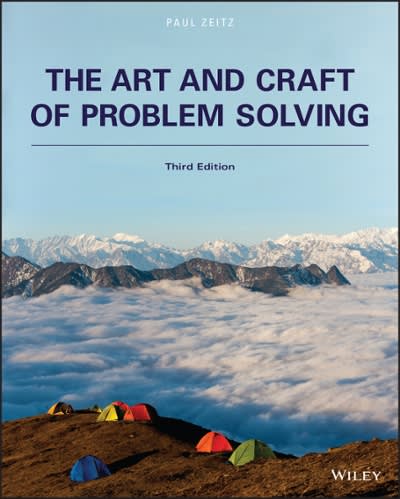
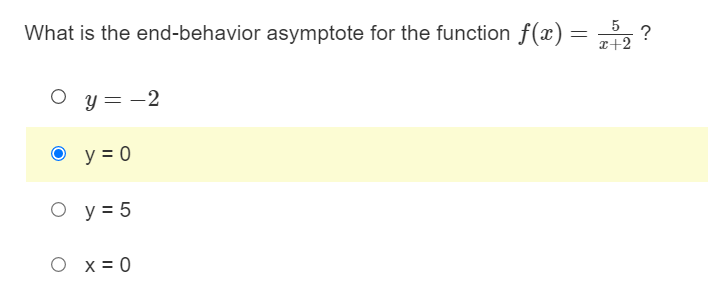
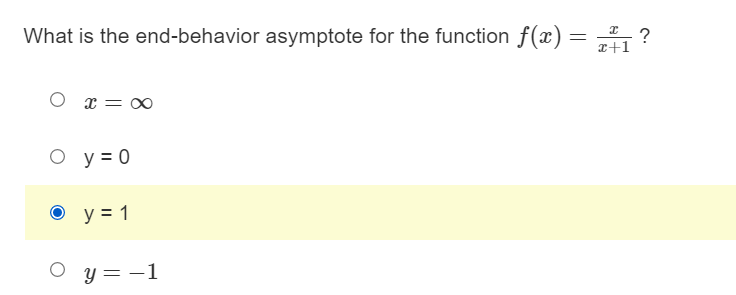

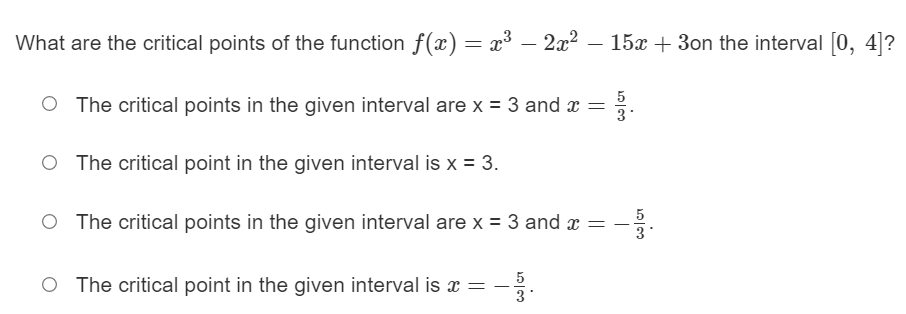


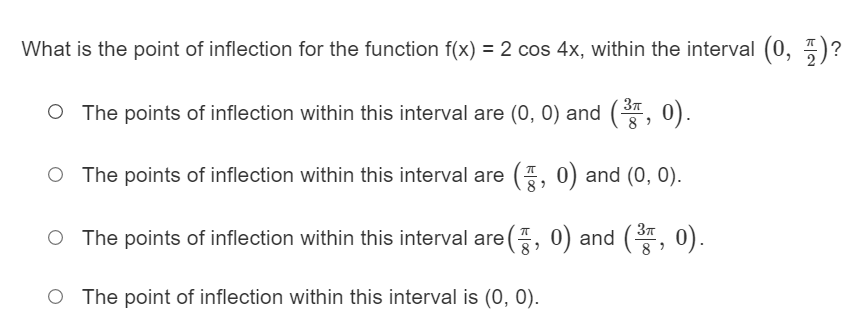



Find all absolute and relative extreme values of the function f(:c) = 2:3 + 6, on the interval [0, 3]. O The absolute maximum is f(3) = 33 and the absolute minimum is f(1) = T. 0 The absolute maximum is f(1) = T and the absolute minimum is f(0} = 6. O The absolute maximum is f(3) = 33 and the absolute minimum is f([}) = 6 0 The absolute maximum is f(3) = 27 and the absolute minimum is f('l) = T. What is the end-behavior asymptote for the function f(a) = ? O y= -2 o y=0 O y = 5 O X= 0What is the end-behavior asymptote for the function f(a) = ? r+1 O y= 0 O y= 1 O y=-1For f(ac) = ac + , find all the values of c on the interval [1, 2] that satisfy the Mean Value Theorem. O c= -V2 O C= V2 2 O c= V2 O c = V3What are the critical points of the function at) 2 2:3 2:1:2 15:13 + 3cm the interval [0, 4]? 5 O The critical points in the given interval are x = 3 and a: : E' O The critical point in the given interval is x = 3. O The critical points in the given interval are x = 3 and :r: = hale! O The critical point in the given interval is :1: : %. If f(a) = 23 - 9a, use Rolle's Theorem to find all the values of c in the interval [-3, 3] such that f '(c) = 0. O c= -3, c= 3 O c= #V3 O c= 1- V3 2 O C = 0, c = 1For f(') = '/:r: 1, nd all the values of c on the interval [2, 5] that satisfy the Mean Value Theorem. _E 004 1 004 0 :E C 4 What is the point of inflection for the function f(x) = 2 cos 4x, within the interval (0, O The points of inflection within this interval are (0, 0) and 8 , 0). O The points of inflection within this interval are 8, 0) and (0, 0). O The points of inflection within this interval are (#, 0) and ( 3, o). O The point of inflection within this interval is (0, 0).Find all absolute and relative extreme values of the function f(m) : :33 3:122 92': + 5, on the interval [-2, 4]. 0 The absolute maximum is f(-1) = 10 and the absolute minimum is f(3) = -22. O The absolute maximum is f(0) = 5 and the absolute minimum is f(3) = -22. O The absolute maximum is f(-1) = 10 and the absolute minimum is f(-4) = 0. 0 The absolute maximum is f(0) = 5 and the absolute minimum is f(-4) = 0. Forf(:c) : Ii does the Mean Value theorem apply on the interval [-2, 2] and why? 0 The Mean Value Theorem applies because f(x) is differentiable on the closed interval [-2, 2]. 0 The Mean Value Theorem applies because f(x) is continuous on [-2, 2]. O The Mean Value Theorem does not apply because f(x) is not continuous on the closed interval [-2, 2]. O The Mean Value Theorem does not apply because f(x) is not differentiable on the closed interval [-2, 2]. Forf(:c) : 32:34 does the Mean Value theorem apply on the interval [-2, 0] and why? O The Mean Value Theorem does not apply because f(x) is not continuous on the closed interval [-2, 0]. O The Mean Value Theorem applies because x) is differentiable on the closed interval [-2, 0]. O The Mean Value Theorem applies because f(x) is continuous on [-2, 0]. O The Mean Value Theorem applies because x) is differentiable on the open interval (-2, 0)




























